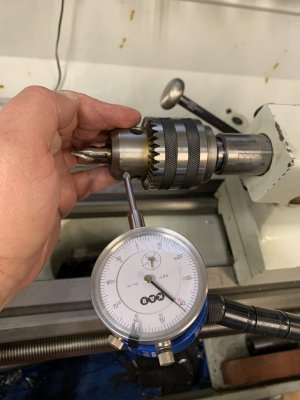Here try this - you should not get any deflection when pulling towards the camera. If it moves then the drill will wander when it engages the material. Also make sure the tailstock is clean and the taper on the chuck is also clean. Wipe them both off when installing the chuck. If there is any swarf interfering the chuck won't be seated.
Post pictures. Much easier to spot problems with pictures.
Use a big fat drill too. the one there is a #5
Post pictures. Much easier to spot problems with pictures.
Use a big fat drill too. the one there is a #5
Attachments
Last edited:

